
MICROBIOLOGY
Scope & Guideline
Advancing the Frontiers of Microbial Science
Introduction
Aims and Scopes
- Microbial Ecology and Diversity:
Research on the ecological roles and diversity of microorganisms in various environments, including extreme habitats, aquatic systems, and terrestrial ecosystems. - Biotechnological Applications of Microorganisms:
Studies that explore the use of microorganisms in bioremediation, biofuel production, and as biocatalysts for industrial processes. - Microbial Pathogenesis and Antibiotic Resistance:
Investigations into the mechanisms of pathogenicity in bacteria, fungi, and viruses, with a focus on antibiotic resistance and the development of new antimicrobial agents. - Microbial Genetics and Genomics:
Research involving genetic analysis of microbial strains, including genome sequencing, gene expression studies, and metabolic pathways. - Interactions Between Microorganisms and Higher Organisms:
Exploration of symbiotic relationships, such as those between microbes and plants or animals, including studies on probiotics and microbiomes. - Environmental Microbiology:
Examination of microbial processes in natural environments, including biogeochemical cycles, biodegradation of pollutants, and microbial responses to environmental changes.
Trending and Emerging
- Microbiome Research:
There is a growing interest in studying complex microbial communities, particularly in relation to human health, agriculture, and environmental sustainability. - Biodegradation and Bioremediation Technologies:
Research on the use of microorganisms for the degradation of pollutants and waste materials is trending, driven by the need for sustainable solutions to environmental challenges. - Antimicrobial Resistance Mechanisms:
Increasingly, studies are focusing on understanding the genetic and biochemical pathways that lead to antimicrobial resistance, along with strategies to combat this growing threat. - Synthetic Microbiology and Genetic Engineering:
The application of synthetic biology and genetic engineering techniques to manipulate microbial systems for biotechnological applications is emerging as a significant area of interest. - Microbial Interactions and Network Dynamics:
There is a trend towards understanding how microorganisms interact within communities and how these interactions influence ecological and evolutionary outcomes. - Extreme Environment Adaptations:
Research into how microorganisms adapt to extreme conditions (e.g., high salinity, temperature, or pressure) is gaining attention, with implications for biotechnology and astrobiology.
Declining or Waning
- Traditional Microbial Taxonomy:
Research focused solely on the classical taxonomy and identification of microorganisms has decreased, as molecular techniques and genomic approaches have taken precedence. - Single-Organism Studies:
Investigations centered on individual microbial species without consideration of community dynamics or ecological interactions are becoming less common, with a shift towards more integrative approaches. - Basic Microbial Physiology:
Studies that focus exclusively on fundamental physiological processes of microbes are waning, as there is a growing emphasis on applied microbiology and ecological interactions. - Pathogen-Specific Studies without Broader Context:
Research that looks at specific pathogens in isolation, without considering their interactions with other microorganisms or their ecological roles, is seeing reduced interest.
Similar Journals
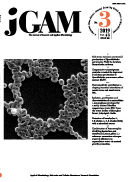
JOURNAL OF GENERAL AND APPLIED MICROBIOLOGY
Innovating biotechnology through rigorous microbial research.JOURNAL OF GENERAL AND APPLIED MICROBIOLOGY, published by the MICROBIOL RES FOUNDATION, is a vital resource in the fields of applied microbiology and biotechnology, as well as in diverse medical applications, serving an academic community dedicated to advancing microbial science. Established in 1955, this journal has a rich history of disseminating innovative research and insights into the intricate world of microorganisms. With an ISSN of 0022-1260 and an E-ISSN of 1349-8037, the journal maintains high scholarly standards and robustness, reflected in its 2023 Scopus rankings placing it in the Q3 and Q4 quartiles within its categories. While primarily based in Japan, the journal engages a global audience, offering valuable contributions that inform both theoretical perspectives and practical applications in microbiology. Despite being a non-open-access publication, it provides pivotal research findings essential for academics, professionals, and students alike, fostering a deeper understanding of microbial impact on health and the environment.

CANADIAN JOURNAL OF MICROBIOLOGY
Innovating Research for a Healthier TomorrowThe Canadian Journal of Microbiology, published by Canadian Science Publishing, is a well-respected journal established in 1954 that serves as a vital platform for advancing knowledge in the fields of microbiology and related disciplines. With an ISSN of 0008-4166 and an E-ISSN of 1480-3275, this journal is recognized for its rigorous peer-review process and its commitment to disseminating high-quality research that spans applied microbiology, biotechnology, genetics, immunology, and more. Currently indexed in several prestigious databases, its impact factor and category quartiles highlight its significance, ranking in the top tiers of applied microbiology and biotechnology as well as other intersecting fields. The journal provides an essential resource for researchers, professionals, and students seeking to stay informed on the latest advancements and breakthroughs, facilitating collaboration and innovation in the microbiological sciences. Set in the dynamic landscape of academia from its headquarters in Ottawa, Canada, the Canadian Journal of Microbiology remains steadfast in its mission to promote research that addresses key challenges and opportunities within the microbiological community.
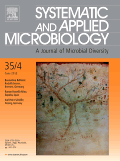
SYSTEMATIC AND APPLIED MICROBIOLOGY
Pioneering Research in Ecology and BiotechnologySYSTEMATIC AND APPLIED MICROBIOLOGY, with ISSN 0723-2020 and E-ISSN 1618-0984, is a prestigious journal published by Elsevier GmbH, located in Munich, Germany. Established in 1983, this journal provides a critical platform for the dissemination of high-quality research in the fields of applied microbiology, ecology, and biotechnology. With a commendable impact reflected in its 2023 Q1 ranking in Applied Microbiology and Biotechnology, and Ecology, Evolution, Behavior and Systematics, along with a Q2 ranking in Microbiology, SYSTEMATIC AND APPLIED MICROBIOLOGY maintains a high standard of scholarly excellence. As part of the Scopus database, it ranks prominently—79th out of 721 in Ecology, and within the top quartiles for its relevant fields, potent in disseminating implications for researchers, professionals, and students alike. Although it does not offer open access, the journal is dedicated to advancing knowledge and innovation in microbiological research, making it an essential resource for anyone in the field seeking to stay abreast of current findings and applications.

CRITICAL REVIEWS IN MICROBIOLOGY
Elevating Research Through Critical EvaluationCRITICAL REVIEWS IN MICROBIOLOGY, published by Taylor & Francis Ltd, is a leading peer-reviewed journal that has made significant contributions to the field of microbiology since its inception in 1971. With a prestigious Q1 ranking in Applied Microbiology and Biotechnology, as well as in Medicine and Microbiology, this journal is recognized for its high-quality reviews that synthesize current research and emerging trends in the discipline. Researchers and professionals rely on its comprehensive evaluations and critical insights, helping to advance knowledge and application in various microbiological contexts. Although the journal does not currently operate under an open access model, it remains an invaluable resource for academics seeking to stay at the forefront of microbiological advances. With a consistent publication record, CRITICAL REVIEWS IN MICROBIOLOGY continues to support the scholarly community by addressing key issues and innovations within the field.

Malaysian Journal of Microbiology
Unleashing the Power of Microbes: Open Access for AllMalaysian Journal of Microbiology is a prestigious open-access journal dedicated to advancing the field of microbiology, published by the Malaysian Society for Microbiology. Since its inception in 2005, this journal has become an essential platform for researchers and practitioners, facilitating the dissemination of innovative studies in applied microbiology, biotechnology, and infectious diseases. Based in Penang, Malaysia, this journal not only focuses on local microbiological research but also positions itself within the broader global scientific community. Although currently placed in the Q4 category in several relevant fields—including Applied Microbiology and Biotechnology, Infectious Diseases, and Medical Microbiology according to the 2023 Scopus rankings—it plays a crucial role in encouraging novel research and fostering collaboration among scientists. The journal encourages submissions that contribute to the understanding of microbial processes, disease mechanisms, and novel biotechnological applications, thereby supporting the continuous growth of knowledge in microbiology. With open access since its launch, the Malaysian Journal of Microbiology ensures that all published works are freely available to the public, enhancing their visibility and impact within the scientific community.

MICROBIOLOGY AND MOLECULAR BIOLOGY REVIEWS
Showcasing Excellence in Microbial and Molecular ResearchMICROBIOLOGY AND MOLECULAR BIOLOGY REVIEWS, published by the American Society for Microbiology, is a premier journal dedicated to advancing the fields of microbiology and molecular biology. With an impressive impact factor reflective of its Q1 ranking in categories such as Immunology, Infectious Diseases, and Molecular Biology, this journal consistently showcases high-quality, peer-reviewed articles that contribute to the current understanding of microbial life and molecular mechanisms. Operating since 1997, the journal aims to bridge the gap between microbiological methods and molecular biology applications, making it an essential resource for researchers, professionals, and students alike. Readers can access content through various platforms, ensuring that the latest findings are readily available to the scientific community. With its esteemed reputation, MICROBIOLOGY AND MOLECULAR BIOLOGY REVIEWS remains a leading voice in the exploration of the life sciences, catering to a broad audience deeply invested in unraveling the complexities of microbial and molecular systems.
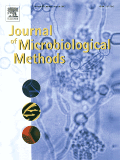
JOURNAL OF MICROBIOLOGICAL METHODS
Empowering research through cutting-edge techniques.JOURNAL OF MICROBIOLOGICAL METHODS, published by Elsevier, is a pivotal platform in the realm of microbiology, covering essential methodologies and innovations from both medical and molecular perspectives. With an ISSN of 0167-7012 and an E-ISSN of 1872-8359, this journal has been a significant contributor to the field since its inception in 1983, with a continued commitment to advancing research through 2024 and beyond. Although classified in the lower quartile (Q3) for both microbiology and molecular biology disciplines, it ranks at #74 in medical microbiology and exhibits a respectable position amidst its peers, marking it as a valuable resource for scholars and practitioners. Researchers, professionals, and students alike will find a wealth of insights and practical methodologies that are vital for contemporary microbiological studies. The journal's emphasis on rigorous peer reviews ensures that the content is both high-quality and relevant, catering to a diverse audience keen on the latest advancements in microbiological practices.
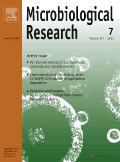
MICROBIOLOGICAL RESEARCH
Transforming Microbiology Through Rigorous ResearchMICROBIOLOGICAL RESEARCH, published by Elsevier GmbH, serves as a leading platform for advancements in the field of Microbiology, holding an impressive Q1 ranking in its category as of 2023. With an ISSN of 0944-5013 and E-ISSN 1618-0623, this journal has been instrumental in disseminating high-quality research since its inception in 1994 and continues to contribute significantly to the academic landscape through 2024. Positioned within the top 13% of publications in the Immunology and Microbiology category, ranked #24 out of 182 according to Scopus, it attracts the attention of researchers, professionals, and students alike. While the journal is not open access, it offers vital insights and peer-reviewed articles that drive innovation and exploration within microbiological research. Its rigorous selection process underscores the importance of quality and relevance in advancing knowledge in this dynamic field.

Environmental Microbiology Reports
Illuminating the Path of Microbial Contributions to Ecosystem HealthEnvironmental Microbiology Reports, published by WILEY, is a prestigious journal dedicated to the field of environmental microbiology, exploring the intricate interactions between microorganisms and their environments. With an ISSN of 1758-2229, this journal has established itself as a crucial resource for researchers, professionals, and students interested in the latest advancements and applications in microbial ecology, soil science, and environmental sustainability. Since its inception in 2009, the journal has grown in impact and reputation, proudly ranked in the Q1 category for both Agricultural and Biological Sciences and Ecology, Evolution, Behavior and Systematics as of 2023. Notably, it occupies the 17th position out of 193 in its subcategory based on Scopus rankings, showcasing its significance within the field. Although it does not currently offer open access options, the high-quality research published in this journal continues to contribute significantly to the understanding of microbial roles in environmental processes, emphasizing the vital role of microbes in maintaining ecosystem health and promoting sustainable practices.
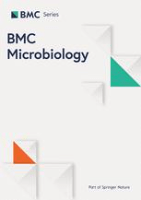
BMC MICROBIOLOGY
Fostering collaboration in the ever-evolving field of microbiology.BMC Microbiology is a leading open access journal published by BMC, dedicated to advancing the field of microbiology since its inception in 2001. With an ISSN of 1471-2180, this journal provides a vital platform for researchers, professionals, and students to share and access high-quality research and innovation in both general and medical microbiology. Based in the United Kingdom, BMC Microbiology holds a commendable Q2 ranking in both various microbiological categories according to the 2023 Scopus rankings, indicating its strong influence in the microbiological community, with a rank of #47 out of 140 in Medical Microbiology and #62 out of 182 in general Microbiology. The journal's commitment to open access ensures that groundbreaking research is freely available to facilitate collaboration and knowledge sharing among the global community of microbiologists. With a focus on publishing original research, reviews, and case studies, BMC Microbiology plays a critical role in disseminating information that can impact health and environmental conditions around the world.